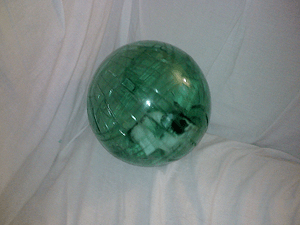Hamster ball facts for kids
Hamster balls are clear, round containers made of plastic. People put small pets like hamsters, gerbils, and degus inside them. This lets these tiny animals run around outside their cages without getting lost or hurt under furniture. Hamster balls are a fun way for pets to get exercise and explore safely. They often make a soft rumbling sound as they roll, which helps you know where your pet is, even if you can't see them.
Hamster balls have been made and sold since at least the 1970s. Most are built from strong, see-through plastic. They have small holes for air and a little door or lid so pet owners can easily put their pet in or take them out.
Contents
Keeping Your Pet Safe in a Hamster Ball
Even though hamster balls are designed to keep pets safe, it's important to use them carefully. There are a few things to watch out for to make sure your pet has a good time and stays healthy.
Avoiding Falls and Injuries
One danger is stairs or other high places where a hamster ball could roll off and fall. This could seriously hurt your pet. To keep your hamster safe, always let them use their ball on the lowest floor of your home, far away from any stairs. Some owners even put up a small barrier near stairs to stop the ball from rolling down.
Taking Breaks and Staying Hydrated
Even with air holes, it's important for hamsters to take breaks from their ball. They can get very hot or tired if they stay inside for too long without water. This could lead to heatstroke or exhaustion. Always keep a close eye on your pet while they are in the ball. If the ball rolls too fast, your pet might somersault inside, which could cause an injury.
Which Pets Can Use Hamster Balls?
Hamster ball makers suggest these balls are best for hamsters, gerbils, mice, degus, and small rats. However, they should not be used for larger pets like chinchillas or guinea pigs. These animals are bigger and have different body shapes than small rodents, so a hamster ball could be very dangerous for them.
Images for kids



